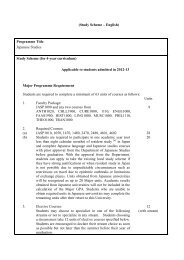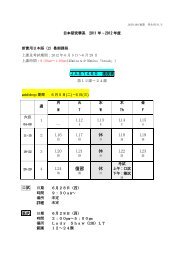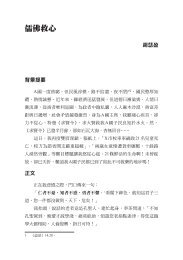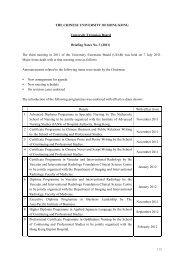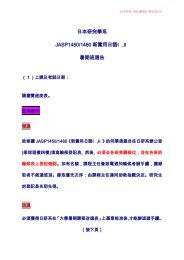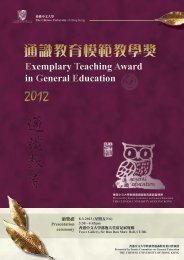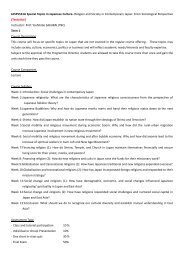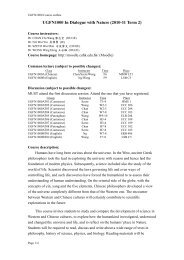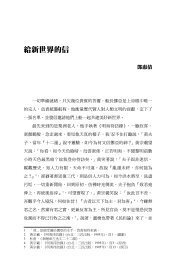ä¸è¼å ¨æ¸ - The Chinese University of Hong Kong
ä¸è¼å ¨æ¸ - The Chinese University of Hong Kong
ä¸è¼å ¨æ¸ - The Chinese University of Hong Kong
You also want an ePaper? Increase the reach of your titles
YUMPU automatically turns print PDFs into web optimized ePapers that Google loves.
Special Topic: Assessment in <strong>University</strong> General Education Program<br />
<strong>of</strong> the learning domains (Bloom, Engelhart, Furst, Hill, & Krathwohl, 1956).<br />
<strong>The</strong>se classification systems were intended to function as communication<br />
tools and standardized structures by which educators could better establish<br />
curricula and initiate research on learning (Menix, 1996). <strong>The</strong> first, and<br />
most influential, <strong>of</strong> these taxonomies covered the cognitive domain and<br />
was introduced in 1956. Over the intervening years, Bloom’s Taxonomy for<br />
the Cognitive Domain (Bloom et al., 1956) has been the subject <strong>of</strong> much<br />
research. To this day, it continues to influence curricular development and<br />
assessment practices worldwide. Additional taxonomies were developed<br />
in the psychomotor and affective domains <strong>of</strong> learning in subsequent years,<br />
but their international acceptance and utilization have been more subdued.<br />
Comparatively few pr<strong>of</strong>essors are aware <strong>of</strong> or focus upon the affective<br />
domain <strong>of</strong> learning, the affective learning taxonomy (Krathwohl, Bloom, &<br />
Masia, 1964), or how it can be used to guide curricular development.<br />
Practically speaking, however, one need not look very far in the higher<br />
education arena before encountering conversations, course syllabi, or<br />
program goals and outcomes that have a decidedly affective tone to them.<br />
Faculty, for example, <strong>of</strong>ten speak <strong>of</strong> their desire for students to be more<br />
open-minded, to be willing to collaborate with one another on projects, to<br />
demonstrate an appreciation for a discipline or approach (e.g., the scientific<br />
method), or to show a greater interest in the coursework they are teaching.<br />
Likewise, program goals <strong>of</strong>ten reference affective dimensions <strong>of</strong> functioning<br />
when they include such statements as, students will display a commitment<br />
to ethical standards <strong>of</strong> practice, students will show concern for the welfare<br />
<strong>of</strong> others, or students will value life-long learning. Arguably, each <strong>of</strong> these<br />
statements contains some affective component. Miller (2005) noted that even



